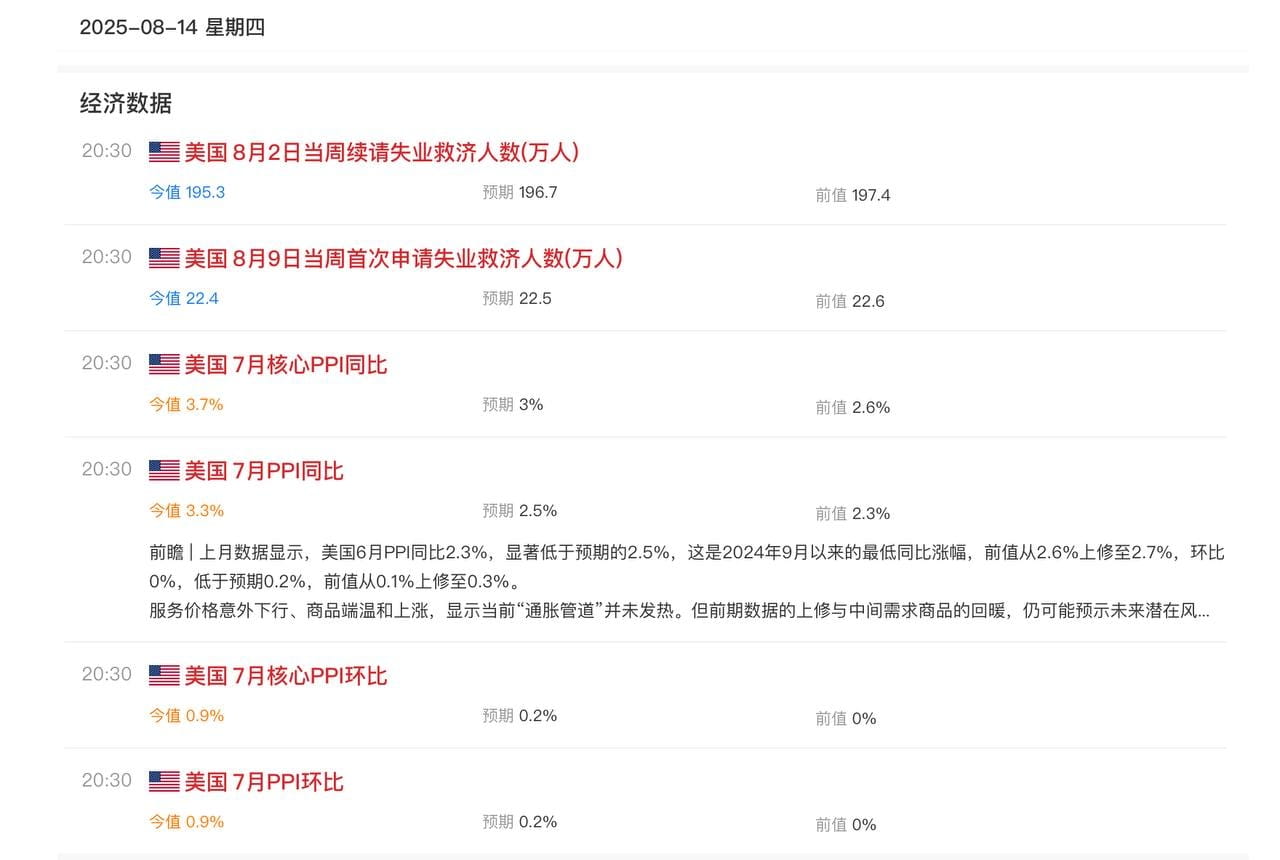The PPI data for July released last night hit the market like a heavy blow, shattering the optimistic expectations for a rate cut by the Federal Reserve in September. Behind this 'off-the-charts' inflation data lie deeper signals of economic crisis. Meanwhile, the Federal Reserve is facing an unprecedented policy dilemma, with strong market expectations for rate cuts on one side and the harsh reality of resurgent inflation on the other.

In-depth interpretation: The fourfold crisis behind the resurgence of inflation.
1. The 'explosive' service sector inflation signals worsening structural economic problems.
Most concerning is that service prices surged by 1.1% in July, marking the largest increase since March 2022, which is by no means a coincidence. More critically, profit margins in the trade services sector soared by 2%, while portfolio management fees skyrocketed by 5.4%. This phenomenon indicates that companies are maintaining profits by significantly raising service prices, and this cost transfer will ultimately fall entirely on consumers.
It is noteworthy that the stickiness of service sector inflation far exceeds that of goods inflation. Once service prices begin to rise, their decline will be extremely slow, indicating that the inflation problem may be more persistent and severe than expected. Current data shows that the U.S. economy is undergoing an 'inflation transmission' led by businesses, which will continuously impact consumer purchasing power.
2. The cost transmission mechanism triggered by tariff policies has already begun.
The more severe reality is that companies are compensating for the increased costs brought about by higher tariffs by adjusting the prices of goods and services. Once this cost transmission mechanism is initiated, it will create a spiraling upward inflationary pressure. Faced with rising tariff costs, companies can only choose two paths: either compress profit margins or raise prices. Current data shows that companies are clearly choosing the latter.
27% of companies reported a decline in sales due to tariffs imposed by China, a significant increase of 21 percentage points compared to 2024. This worsening trend indicates that the negative impacts of trade friction are accelerating, and companies can only pass these costs onto consumers for survival, thereby driving up the overall price level.
3. Expectations for a Federal Reserve rate cut face systemic reconstruction.
The market had almost completely digested the expectations for a rate cut in September, with the probability once reaching 100%. However, the latest 'off-the-charts' PPI data completely changed this expectation. More critically, Federal Reserve officials have issued a warning: do not 'hastily' cut rates before inflation is under control.
This shift in policy stance means that even if signs of economic slowdown appear, the Federal Reserve may be forced to maintain high interest rates to control inflation. For the market, this policy uncertainty will bring significant risks. If the Federal Reserve chooses to keep rates unchanged at the September meeting, the market will face systemic adjustment pressures.
4. The 'hidden recession' in the job market is intensifying.
Although the number of initial jobless claims remains relatively low at 224,000, this surface calm hides deeper issues. The significant decline in companies' willingness to hire suggests that the job market is experiencing a 'hidden recession.'
More complicated is the distortion of employment data caused by the decline in labor supply due to tighter immigration policies. On one hand, the labor shortage has driven up wage costs; on the other hand, economic uncertainty has suppressed companies' hiring demands. This structural contradiction significantly undermines the effectiveness of traditional monetary policy tools.
For investors, the current economic environment signals that greater risks are on the horizon. The resurgence of inflation will not only erode consumer purchasing power but will also force the Federal Reserve to maintain a tightening policy, thereby exerting continuous pressure on asset prices.
